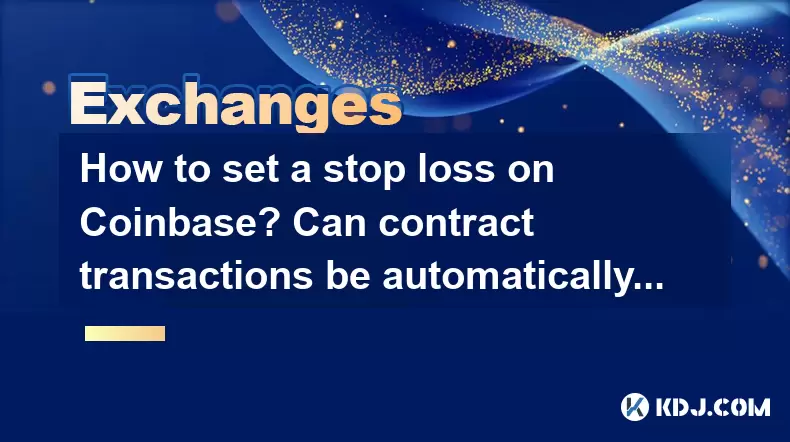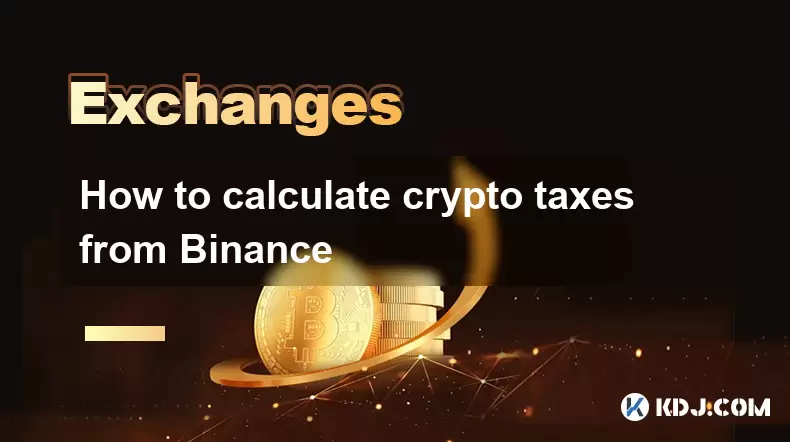-
 Bitcoin
Bitcoin $117500
2.15% -
 Ethereum
Ethereum $3911
6.19% -
 XRP
XRP $3.316
10.79% -
 Tether USDt
Tether USDt $1.000
0.01% -
 BNB
BNB $787.2
2.24% -
 Solana
Solana $175.2
4.15% -
 USDC
USDC $0.9999
0.00% -
 Dogecoin
Dogecoin $0.2225
8.40% -
 TRON
TRON $0.3383
0.28% -
 Cardano
Cardano $0.7868
6.02% -
 Stellar
Stellar $0.4382
9.34% -
 Hyperliquid
Hyperliquid $40.92
7.56% -
 Sui
Sui $3.764
7.63% -
 Chainlink
Chainlink $18.48
10.66% -
 Bitcoin Cash
Bitcoin Cash $582.1
1.88% -
 Hedera
Hedera $0.2601
6.30% -
 Avalanche
Avalanche $23.33
4.94% -
 Ethena USDe
Ethena USDe $1.001
0.02% -
 Litecoin
Litecoin $122.3
2.04% -
 UNUS SED LEO
UNUS SED LEO $8.969
-0.27% -
 Toncoin
Toncoin $3.339
0.86% -
 Shiba Inu
Shiba Inu $0.00001287
4.30% -
 Uniswap
Uniswap $10.43
7.38% -
 Polkadot
Polkadot $3.861
5.08% -
 Dai
Dai $1.000
0.02% -
 Bitget Token
Bitget Token $4.513
3.41% -
 Monero
Monero $267.7
-6.18% -
 Cronos
Cronos $0.1499
4.14% -
 Pepe
Pepe $0.00001110
5.15% -
 Aave
Aave $284.9
8.28%
How to set a stop loss on Coinbase? Can contract transactions be automatically closed?
To manage crypto investments on Coinbase, set a stop loss to limit losses and use Coinbase Pro for automatic contract transaction closure if available in your region.
May 18, 2025 at 06:15 am

Setting a stop loss on Coinbase and understanding whether contract transactions can be automatically closed are crucial aspects of managing your cryptocurrency investments. In this article, we will explore these topics in detail, providing you with a comprehensive guide on how to use these features effectively on the Coinbase platform.
Understanding Stop Loss on Coinbase
A stop loss order is a tool used by traders to limit potential losses on their investments. On Coinbase, this feature allows you to set a specific price at which your asset will be automatically sold if the market price reaches that level. This helps you manage risk by ensuring that you do not lose more than you are willing to on a particular investment.
How to Set a Stop Loss on Coinbase
To set a stop loss on Coinbase, follow these detailed steps:
Log into your Coinbase account: Ensure you are logged into your Coinbase account and navigate to the trading section.
Select the asset: Choose the cryptocurrency for which you want to set a stop loss. For example, if you want to set a stop loss for Bitcoin, click on the Bitcoin trading pair.
Navigate to the order form: On the trading page, you will see an order form where you can input your trading parameters.
Choose the order type: From the dropdown menu, select "Stop Limit". This is the type of order that allows you to set a stop loss.
Set the stop price: Enter the price at which you want the stop loss to trigger. This is the price at which your order will become active.
Set the limit price: Enter the price at which you want your asset to be sold once the stop price is reached. This helps ensure that your asset is sold at a specific price, rather than at the market price which can fluctuate rapidly.
Enter the amount: Specify the amount of the cryptocurrency you want to sell when the stop loss is triggered.
Review and submit the order: Double-check all the details you have entered, and then submit the order. Once submitted, your stop loss order will be active, and you will see it listed in your open orders.
Can Contract Transactions Be Automatically Closed on Coinbase?
Contract transactions, such as futures or options, are not directly supported on Coinbase's main platform. However, Coinbase does offer advanced trading features through its Coinbase Pro and Coinbase Advanced Trade platforms, which may include the ability to trade derivatives in certain regions.
On Coinbase Pro and Coinbase Advanced Trade, you can set up stop orders for certain types of transactions, including margin trading. However, the ability to automatically close contract transactions depends on the specific features available in your region and the type of contract you are trading.
How to Set Up Automatic Closure of Contract Transactions on Coinbase Pro
If you have access to Coinbase Pro and want to set up an automatic closure for a contract transaction, follow these steps:
Log into Coinbase Pro: Access your Coinbase Pro account and navigate to the trading section.
Select the contract: Choose the contract you want to trade, such as a futures contract if available in your region.
Navigate to the order form: On the trading page, you will find an order form where you can input your trading parameters.
Choose the order type: From the dropdown menu, select "Stop". This type of order allows you to set a price at which your contract will be automatically closed.
Set the stop price: Enter the price at which you want the contract to be closed. This is the price at which your order will become active.
Enter the amount: Specify the amount of the contract you want to close when the stop price is reached.
Review and submit the order: Double-check all the details you have entered, and then submit the order. Once submitted, your stop order will be active, and you will see it listed in your open orders.
Considerations and Limitations
When setting a stop loss or an automatic closure for contract transactions, there are several considerations and limitations to keep in mind:
Market volatility: Cryptocurrency markets can be highly volatile, and prices can fluctuate rapidly. This means that your stop loss or automatic closure may be triggered at a price different from what you expected.
Slippage: There may be a difference between the price at which your order is triggered and the price at which it is executed. This is known as slippage and can affect the effectiveness of your stop loss or automatic closure.
Liquidity: The liquidity of the asset or contract you are trading can impact the execution of your orders. In low liquidity markets, it may be harder to execute your orders at the desired price.
Platform availability: The availability of certain features, such as stop loss orders and contract trading, can vary by region and platform. Always check the specific features available to you on Coinbase and its advanced platforms.
Frequently Asked Questions
Q: Can I set a stop loss on Coinbase for all types of cryptocurrencies?
A: You can set a stop loss on Coinbase for most cryptocurrencies that are available for trading on the platform. However, the availability of certain cryptocurrencies and trading features may vary by region.
Q: What happens if the market price gaps through my stop loss price?
A: If the market price gaps through your stop loss price, your order will be triggered at the next available price. This can result in slippage, where the execution price is different from your stop loss price.
Q: Can I modify or cancel a stop loss order after it has been placed?
A: Yes, you can modify or cancel a stop loss order at any time before it is triggered. Simply navigate to your open orders on Coinbase and select the order you wish to modify or cancel.
Q: Are there any fees associated with setting a stop loss on Coinbase?
A: Coinbase charges trading fees based on the type of order and the volume of your trade. Stop loss orders are subject to these standard trading fees, which can vary depending on your trading activity and the specific cryptocurrency you are trading.
Disclaimer:info@kdj.com
The information provided is not trading advice. kdj.com does not assume any responsibility for any investments made based on the information provided in this article. Cryptocurrencies are highly volatile and it is highly recommended that you invest with caution after thorough research!
If you believe that the content used on this website infringes your copyright, please contact us immediately (info@kdj.com) and we will delete it promptly.
- XRP ETF, Bitcoin ETF, and Japan: A New Era for Crypto Investing?
- 2025-08-08 14:30:12
- Crypto, Congress, and Bills: Navigating the Regulatory Landscape in 2025
- 2025-08-08 14:30:12
- Union Jack Oil, Unused Gas, and Bitcoin: A New York Minute on UK's Crypto-Energy Play
- 2025-08-08 14:50:12
- Bitcoin Price: Bullish Flag Points to $123K Breakout?
- 2025-08-08 14:50:12
- Crypto Group's WNBA Dildo Toss: Meme Coin Mania or Just Plain Dumb?
- 2025-08-08 14:55:13
- Stablecoins, Hong Kong, and On-Chain Finance: Navigating the Regulatory Maze
- 2025-08-08 12:30:12
Related knowledge

How to use margin trading on Poloniex
Aug 08,2025 at 09:50am
Understanding Margin Trading on Poloniex

How to use advanced trading on Gemini
Aug 08,2025 at 04:07am
Understanding Advanced Trading on GeminiAdvanced trading on Gemini refers to a suite of tools and order types designed for experienced traders who wan...

How to deposit USD on Bitstamp
Aug 07,2025 at 05:18pm
Understanding Bitstamp and USD DepositsBitstamp is one of the longest-standing cryptocurrency exchanges in the industry, offering users the ability to...

How to use the Kraken Pro interface
Aug 08,2025 at 09:57am
Understanding the Kraken Pro Interface LayoutThe Kraken Pro interface is designed for both novice and experienced traders seeking a streamlined experi...

How to find my transaction ID on Gemini
Aug 08,2025 at 12:50am
Understanding the Transaction ID in Cryptocurrency ExchangesA transaction ID (TXID) is a unique alphanumeric string that identifies a specific transfe...

How to calculate crypto taxes from Binance
Aug 08,2025 at 07:56am
Understanding Cryptocurrency Taxation on BinanceCalculating crypto taxes from Binance requires a clear understanding of how tax authorities classify d...

How to use margin trading on Poloniex
Aug 08,2025 at 09:50am
Understanding Margin Trading on Poloniex

How to use advanced trading on Gemini
Aug 08,2025 at 04:07am
Understanding Advanced Trading on GeminiAdvanced trading on Gemini refers to a suite of tools and order types designed for experienced traders who wan...

How to deposit USD on Bitstamp
Aug 07,2025 at 05:18pm
Understanding Bitstamp and USD DepositsBitstamp is one of the longest-standing cryptocurrency exchanges in the industry, offering users the ability to...

How to use the Kraken Pro interface
Aug 08,2025 at 09:57am
Understanding the Kraken Pro Interface LayoutThe Kraken Pro interface is designed for both novice and experienced traders seeking a streamlined experi...

How to find my transaction ID on Gemini
Aug 08,2025 at 12:50am
Understanding the Transaction ID in Cryptocurrency ExchangesA transaction ID (TXID) is a unique alphanumeric string that identifies a specific transfe...

How to calculate crypto taxes from Binance
Aug 08,2025 at 07:56am
Understanding Cryptocurrency Taxation on BinanceCalculating crypto taxes from Binance requires a clear understanding of how tax authorities classify d...
See all articles

























































































